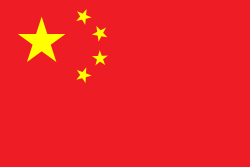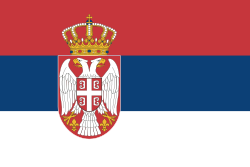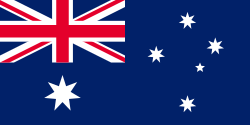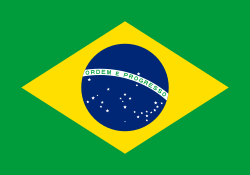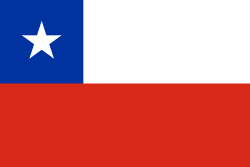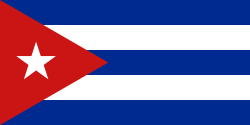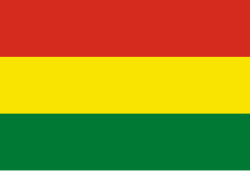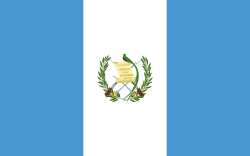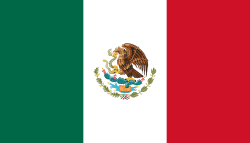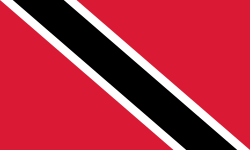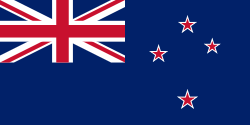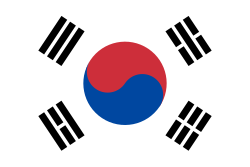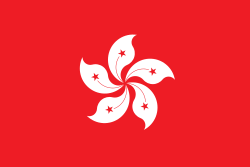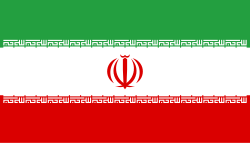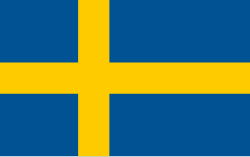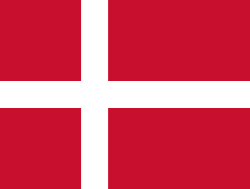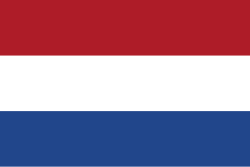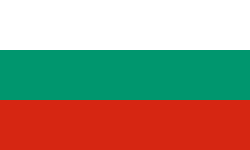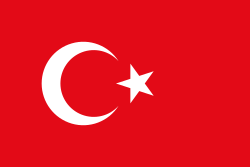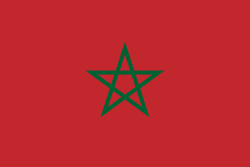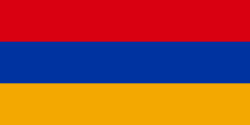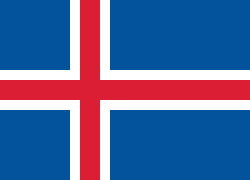Fed Cup 2009
| Fed Cup 2009 | |
|---|---|
| Datum | 7. února – 8. listopadu 2009 |
| Ročník | 47. |
| Finálové utkání | |
| Vítěz | |
| Finalista | |
| Výsledek | 4–0 |
| Místo | Reggio di Calabria, Itálie |
| Povrch | antuka / venku |
| Fed Cup | |
< 2008 2010 > | |
Fed Cup byl 47. ročníkem této nejdůležitější týmové soutěže žen. Finálové utkání se uskutečnilo 7.-8. listopadu 2009 v italské Reggio di Calabria na antukovém povrchu. Domácí Itálie porazila hráčky Spojených států amerických 4 : 0.
Světová skupina 2009
| Účastníci Světové skupiny 2009 | |||
Argentina | Česko | Čína | Francie |
|---|---|---|---|
Itálie | Rusko | Španělsko | USA |
Pavouk
| Čtvrtfinále 7.-8. února | Semifinále 25.-26. dubna | Finále 7.-8. listopadu | |||||||||||||
| Moskva, Rusko (tvrdý v hale) | |||||||||||||||
| 1 | | 5 | |||||||||||||
| | 0 | Castellaneta, Itálie (antuka) | |||||||||||||
| 1 | | 1 | |||||||||||||
| Orléans, Francie (tvrdý v hale) | 4 | | 4 | ||||||||||||
| 4 | | 5 | |||||||||||||
| | 0 | Reggio di Calabria, Itálie (antuka) | |||||||||||||
| | 4 | ||||||||||||||
| Surprise, AZ, Spojené státy (tvrdý) | | 0 | |||||||||||||
| | 2 | ||||||||||||||
| 3 | | 3 | Brno, Česko (tvrdý v hale) | ||||||||||||
| 3 | | 3 | |||||||||||||
| Brno, Česko (koberec v hale) | | 2 | |||||||||||||
| | 4 | ||||||||||||||
| 2 | | 1 | |||||||||||||
Finále
| Itálie | 4 : | 0 | Spojené státy americké | |||||||||||||||||||||||||||||||||||||||||||||||||||||||||||||||||||||||||||||||||||||||||
|---|---|---|---|---|---|---|---|---|---|---|---|---|---|---|---|---|---|---|---|---|---|---|---|---|---|---|---|---|---|---|---|---|---|---|---|---|---|---|---|---|---|---|---|---|---|---|---|---|---|---|---|---|---|---|---|---|---|---|---|---|---|---|---|---|---|---|---|---|---|---|---|---|---|---|---|---|---|---|---|---|---|---|---|---|---|---|---|---|---|---|---|---|
| Circolo del Tennis, Reggio di Calabria, Itálie 7.- 8. listopadu 2009 antuka (venku) | ||||||||||||||||||||||||||||||||||||||||||||||||||||||||||||||||||||||||||||||||||||||||||||
| ||||||||||||||||||||||||||||||||||||||||||||||||||||||||||||||||||||||||||||||||||||||||||||
Baráž Světové skupiny
Čtyři týmy, které prohrály ve Světové skupině v 1. kole (Čína, Francie, Argentina a Španělsko) a 4 vítězné týmy ze Světové skupiny II (Slovensko, Německo, Srbsko a Ukrajina) se utkaly v baráži o Světovou skupinu.
| Baráž Světové skupiny 25. a 26. dubna | ||||
|---|---|---|---|---|
| Místo konání | Povrch | Domácí | Výsledek | Hosté |
| Lleida, Španělsko | antuka | 4–0 | ||
| Limoges, Francie | antuka (h) | 3–2 | ||
| Frankfurt, Německo | antuka | 3–2 | ||
| Mar del Plata, Argentina | antuka | 5–0 | ||
- Srbsko, Ukrajina a Německo postoupily do Světové skupiny pro rok 2010.
- Francie zůstala ve Světové skupině pro rok 2010.
- Slovensko zůstalo ve Světové skupině II pro rok 2010.
- Španělsko, Čína a Argentina sestoupily do Světové skupiny II pro rok 2010.
Světová skupina II
| Světová skupina II – 7. a 8. února | ||||
|---|---|---|---|---|
| Místo konání | Povrch | Domácí | Výsledek | Hosté |
| Bratislava, Slovensko | tvrdý v hale | 4–1 | ||
| Curych, Švýcarsko | tvrdý v hale | 3–2 | ||
| Bělehrad, Srbsko | tvrdý v hale | 4–1 | ||
| Charkov, Ukrajina | tvrdý v hale | 3–2 | ||
- Slovensko, Německo, Srbsko a Ukrajina postoupily do baráže Světové skupiny.
- Belgie, Švýcarsko, Japonsko a Izrael hrály v baráži o Světovou skupinu II.
Baráž Světové skupiny II
Čtyři týmy, které prohrály ve Světové skupině II (Belgie, Švýcarsko, Japonsko a Izrael) hrály baráž proti týmům, které se kvalifikovaly z 1. skupin oblastních zón. Dva týmy se kvalifikovaly z evropsko-africké zóny (Estonsko a Polsko), jeden z asijsko-oceánské zóny (Austrálie) a jeden tým z americké zóny (Kanada).
| Baráž Světové skupiny II 25. a 26. dubna | ||||
|---|---|---|---|---|
| Místo konání | Povrch | Domácí | Výsledek | Hosté |
| Hasselt, Belgie | antuka v hale | 3–2 | ||
| Tallinn, Estonsko | tvrdý v hale | 3–2 | ||
| Gdynia, Polsko | antuka | 3–2 | ||
| Mildura, Austrálie | tráva | 3–1 | ||
- Polsko, Estonsko a Austrálie postoupily do Světové skupiny II pro rok 2010.
- Belgie zůstala ve Světové skupině II pro rok 2010.
- Kanada zůstala v americké zóně pro rok 2010.
- Švýcarsko a Izrael sestoupily do evropsko-africké zóny pro rok 2010.
- Japonsko sestoupilo do asijsko-oceánské zóny pro rok 2010.
Americká Zóna
1. skupina
- 1. -
 Kanada — postup do baráže Světové skupiny II
Kanada — postup do baráže Světové skupiny II - 2. -
 Paraguay
Paraguay - 3. -
 Brazílie
Brazílie - 3. -
 Kolumbie
Kolumbie - 5. -
 Bahamy — sestup do 2. skupiny pro rok 2010
Bahamy — sestup do 2. skupiny pro rok 2010 - 5. -
 Portoriko — sestup do 2. skupiny pro rok 2010
Portoriko — sestup do 2. skupiny pro rok 2010
2. skupina
 Chile — postup do 1. skupiny pro rok 2010
Chile — postup do 1. skupiny pro rok 2010 Kuba — postup do 1. skupiny pro rok 2010
Kuba — postup do 1. skupiny pro rok 2010 Bolívie
Bolívie Dominikánská republika
Dominikánská republika Guatemala
Guatemala Mexiko
Mexiko Panama
Panama Peru
Peru Trinidad a Tobago
Trinidad a Tobago
Zóna Asie a Oceánie
1. skupina
- 1. -
 Austrálie — postup do baráže Světové skupiny II
Austrálie — postup do baráže Světové skupiny II - 2. -
 Nový Zéland
Nový Zéland - 3. -
 Thajsko
Thajsko - 4. -
 Indonésie
Indonésie - 5. -
 Uzbekistán
Uzbekistán - 6. -
 Jižní Korea
Jižní Korea - 7. -
 Tchaj-wan
Tchaj-wan - 8. -
 Indie — sestup do 2. skupiny pro rok 2010
Indie — sestup do 2. skupiny pro rok 2010
2. skupina
- 1. -
 Kazachstán — postup do 1. skupiny pro rok 2010
Kazachstán — postup do 1. skupiny pro rok 2010 - 2. -
 Hongkong
Hongkong - 3. -
 Singapur
Singapur - 4. -
 Írán
Írán
Zóna Evropy a Afriky
1. skupina
- 1. -
 Estonsko a
Estonsko a  Polsko — postup do baráže Světové skupiny II
Polsko — postup do baráže Světové skupiny II - 3. -
 Bělorusko a
Bělorusko a  Velká Británie
Velká Británie - 5. -
 Chorvatsko a
Chorvatsko a  Švédsko
Švédsko - 7. -
 Dánsko a
Dánsko a  Maďarsko
Maďarsko - 9. -
 Nizozemsko,
Nizozemsko,  Rumunsko a
Rumunsko a  Slovinsko
Slovinsko - 12. -
 Rakousko a
Rakousko a  Bosna a Hercegovina
Bosna a Hercegovina - 14. -
 Bulharsko a
Bulharsko a  Lucembursko — sestup do 2. skupiny pro rok 2010
Lucembursko — sestup do 2. skupiny pro rok 2010
2. skupina
 Lotyšsko — postup do 1. skupiny pro rok 2010
Lotyšsko — postup do 1. skupiny pro rok 2010 Portugalsko — postup do 1. skupiny pro rok 2010
Portugalsko — postup do 1. skupiny pro rok 2010 Jihoafrická republika
Jihoafrická republika Gruzie
Gruzie Turecko — sestup do 3. skupiny pro rok 2010
Turecko — sestup do 3. skupiny pro rok 2010 Maroko — sestup do 3. skupiny pro rok 2010
Maroko — sestup do 3. skupiny pro rok 2010
3. skupina
 Řecko — postup do 2. skupiny pro rok 2010
Řecko — postup do 2. skupiny pro rok 2010 Arménie — postup do 2. skupiny pro rok 2010
Arménie — postup do 2. skupiny pro rok 2010 Finsko
Finsko Norsko
Norsko Lichtenštejnsko
Lichtenštejnsko Irsko
Irsko Egypt
Egypt Malta
Malta Moldávie
Moldávie Alžírsko
Alžírsko Island
Island
Externí odkazy
 Obrázky, zvuky či videa k tématu Fed Cup 2009 na Wikimedia Commons
Obrázky, zvuky či videa k tématu Fed Cup 2009 na Wikimedia Commons - Oficiální stránky Fed Cupu Archivováno 7. 10. 2010 na Wayback Machine.
Média použitá na této stránce
Vlajka České republiky. Podoba státní vlajky České republiky je definována zákonem České národní rady č. 3/1993 Sb., o státních symbolech České republiky, přijatým 17. prosince 1992 a který nabyl účinnosti 1. ledna 1993, kdy rozdělením České a Slovenské Federativní republiky vznikla samostatná Česká republika. Vlajka je popsána v § 4 takto: „Státní vlajka České republiky se skládá z horního pruhu bílého a dolního pruhu červeného, mezi něž je vsunut žerďový modrý klín do poloviny délky vlajky. Poměr šířky k její délce je 2 : 3.“
This is the national flag of Belgium, according to the Official Guide to Belgian Protocol. It has a 13:15 aspect ratio, though it is rarely seen in this ratio.
Its colours are defined as Pantone black, Pantone yellow 115, and Pantone red 032; also given as CMYK 0,0,0,100; 0,8.5,79,0; and 0,94,87,0.Flag of Canada introduced in 1965, using Pantone colors. This design replaced the Canadian Red Ensign design.
Flag of Australia, when congruence with this colour chart is required (i.e. when a "less bright" version is needed).
See Flag of Australia.svg for main file information.Při zobrazení tohoto souboru lze snadno přidat orámování
| Flag of Bolivia* | |
|---|---|
| country | Template:I18n/Republic of Bolivia |
| used by | Bolivia |
| from | 1851 |
| until | Present |
| created by | Government of Bolivia |
| format | 15:22 |
| shape | rectangular |
| colours | červená, žlutá, zelená
flag has 3 horizontal stripes |
| other characteristics | A horizontal tricolor of red, yellow and green. |
The flag of the Dominican Republic has a centered white cross that extends to the edges. This emblem is similar to the flag design and shows a bible, a cross of gold and 6 Dominican flags. There are branches of olive and palm around the shield and above on the ribbon is the motto "Dios,Patria!, Libertad" ("God, Country, Freedom") and to amiable freedom. The blue is said to stand for liberty, red for the fire and blood of the independence struggle and the white cross symbolized that God has not forgotten his people. "Republica Dominicana". The Dominican flag was designed by Juan Pablo Duarte, father of the national Independence of Dominican Republic. The first dominican flag was sewn by a young lady named Concepción Bona, who lived across the street of El Baluarte, monument where the patriots gathered to fight for the independence, the night of February 27th, 1844. Concepción Bona was helped by her first cousin María de Jesús Pina.
The flag of the Dominican Republic has a centered white cross that extends to the edges. This emblem is similar to the flag design and shows a bible, a cross of gold and 6 Dominican flags. There are branches of olive and palm around the shield and above on the ribbon is the motto "Dios,Patria!, Libertad" ("God, Country, Freedom") and to amiable freedom. The blue is said to stand for liberty, red for the fire and blood of the independence struggle and the white cross symbolized that God has not forgotten his people. "Republica Dominicana". The Dominican flag was designed by Juan Pablo Duarte, father of the national Independence of Dominican Republic. The first dominican flag was sewn by a young lady named Concepción Bona, who lived across the street of El Baluarte, monument where the patriots gathered to fight for the independence, the night of February 27th, 1844. Concepción Bona was helped by her first cousin María de Jesús Pina.
The national flag of Kingdom of Thailand; there are total of 3 colours:
- Red represents the blood spilt to protect Thailand’s independence and often more simply described as representing the nation.
- White represents the religion of Buddhism, the predominant religion of the nation
- Blue represents the monarchy of the nation, which is recognised as the centre of Thai hearts.
bendera Indonesia
Flag of Iran. The tricolor flag was introduced in 1906, but after the Islamic Revolution of 1979 the Arabic words 'Allahu akbar' ('God is great'), written in the Kufic script of the Qur'an and repeated 22 times, were added to the red and green strips where they border the white central strip and in the middle is the emblem of Iran (which is a stylized Persian alphabet of the Arabic word Allah ("God")).
The official ISIRI standard (translation at FotW) gives two slightly different methods of construction for the flag: a compass-and-straightedge construction used for File:Flag of Iran (official).svg, and a "simplified" construction sheet with rational numbers used for this file.
Flag of Portugal, created by Columbano Bordalo Pinheiro (1857-1929), officially adopted by Portuguese government in June 30th 1911 (in use since about November 1910).
Used color: National flag | South African Government and Pantone Color Picker
| zelená | rendered as RGB 0 119 73 | Pantone 3415 C |
| žlutá | rendered as RGB 255 184 28 | Pantone 1235 C |
| červená | rendered as RGB 224 60 49 | Pantone 179 C |
| modrá | rendered as RGB 0 20 137 | Pantone Reflex Blue C |
| bílá | rendered as RGB 255 255 255 | |
| černá | rendered as RGB 0 0 0 |
Georgian flag in Pantone MS.
Finská vlajka
Flag of Liechtenstein
Zelený pruh má znázorňovat většinové katolické obyvatelsto Irska, oranžový pruh reprezentuje protestantskou menšinu a bílý pruh uprostřed znázorňuje mír a harmonii mezi nimi.
The Flag of Iceland.
- Horizontal aspect ratio: 7:1:2:1:14;
- Vertical aspect ratio: 7:1:2:1:7.




